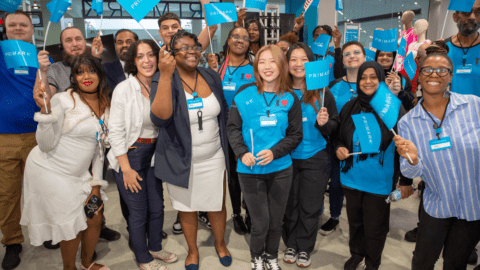Simple evaluations of customers’ shopping experiences can deliver the analytics retailers need to assess and improve the customer experience. Introduced in 2003, the Net Promoter Score (NPS), based on just one feedback question, has been leveraged by most retailers to measure customer recommendations and loyalty.
New research from Foresee revealed a next–generation customer experience metric: the Word of Mouth Index (WoMI). By incorporating a second feedback question, WoMI measures both positive and negative word-of-mouth, generating more actionable and precise data and insights for retail leaders. The NPS and WoMI questions both are rated by consumers on a 10-point scale.
The Foresee study, entitled: The Word Of Mouth Index: Top 100 Brand Edition, fall 2013, released WoMI scores for leading U.S. brands, including 14 in the retail sector. Overall, retail received the highest WoMI score among the industries studied.
Advertisement
NPS simply asks customers: “How likely are you to recommend this company?” according to the research, and assumes that those not recommending are detracting from a specific brand. NPS “has some serious flaws, including a large margin of error and a bias toward overstating detractor behavior, often hundreds of times over,” the study indicated. “This assumption that anyone who is not a promoter is actively detracting from the business … could cause companies that use NPS as a KPI to make poor business decisions … [and spend] millions of dollars chasing after supposed ‘detractors,’ who are often neutral toward a brand or even active advocates.”
For example, in the retail sector, detractors were overstated by an average of 810%, ranging from a high of 2,100% for Gap to a low of 57% for Burberry.
In response, ForeSee collected more than 2 million survey responses over the last two years to research and develop a more accurate, and precise way to measure both promoters and detractors. Accordingly, WoMI utilizes a second question: “How likely are you to discourage others from doing business with this company?” to measure likelihood to recommend as well as likelihood to detract.
“By measuring both positive and negative word-of-mouth, business leaders gain a next-generation metric that, when viewed within the context of the customer experience ecosystem of metrics, provides actionable insights that can help leaders improve key business outcomes, including word of mouth,” according to the research. The new metric “helps leaders distinguish between True Detractors and True Promoters so they can avoid wasting precious resources trying to convert passives into promoters, and eliminates the risk of alienating customers who aren’t legitimate detractors.” Furthermore, WoMI helps leaders understand what drives both positive and negative word of mouth, allowing companies to “take proactive measures to fix issues affecting the customer experience.”
For a complete copy of the WoMI report from Foresee, click here.








